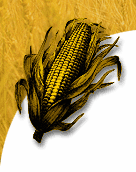

  |
|
|
Locally grown food: Tastes great and less mileage
(Tuesday, July 22, 2003 -- CropChoice news) -- From a news release.
Contacts: Rich Pirog (515) 294-1854, rspirog@iastate.edu, or Laura Miller,
(515) 294-5272
AMES, Iowa -- A new report from the Leopold Center for Sustainable
Agriculture shows that locally grown produce traveled an average of 56
miles from farm to point of sale, while the same types of produce from
conventional sources within the United States traveled an average of 1,494
miles nearly 27 times farther to reach the same points of sale.
Leopold Center Marketing and Food Systems Program Leader Rich Pirog and
Iowa State University student Andrew Benjamin looked at produce sales
transactions to institutions that participated in an All-Iowa mealbrokering
project coordinated by Practical Farmers of Iowa (PFI). The data
represented fresh fruits and vegetables from 34 Iowa farms sold in 2001 to
23 conference centers, hotels and other institutions in central Iowa.
We wanted to know how the miles logged by Iowa fresh produce arriving at
institutions compared to miles logged had this produce come from more
conventional locations across the country,Pirog noted. We used the PFI data
set and what we knew about fresh produce commerce in the Midwest to make
our comparisons.
Their comparisons showed that mileage also varied widely by produce type.
Conventionally sourced broccoli traveled more than 90 times farther than
its local counterparts, and carrots and sweet corn more than 70 times farther.
Using a formula representing both distance and weight of the load
transported, Pirog and Benjamin calculated a weighted average source
distance, or the food milesfor each of 16 produce types in the PFI-brokered
sales data. The pair then examined 1998 records for these 16 produce items
arriving at the Chicago and St. Louis terminal produce markets, and current
national produce shipment data to determine which states in the continental
United States supply the upper Midwest with 50 percent or more of the
produce. They used this information to calculate food miles for the produce
items in a conventional system, substituting the weights and points of sale
for the PFI produce transactions so that comparisons could be made with the
locally grown food miles.
Within the conventional data set pumpkins, cabbage and potatoes traveled
the fewest miles, between 8 and 15 times farther than their local
counterparts. Pirog and Benjamin also found that the sum of the food miles
to supply the 16 fruits and vegetables from local sources was 715 miles,
about the distance from Des Moines to Denver. The sum of the food miles for
the conventional produce was 25,301 miles, roughly a trip that would circle
the earth pole to pole starting and ending in Des Moines, plus 440
additional miles north to the Canadian border.
Were now researching how best to communicate the food miles concept to
consumers who want local food but also demand freshness, taste and
quality,Pirog added.
For a copy of the report, Checking the food odometer: Comparing food miles
for local versus conventional produce sales to Iowa institutions,contact
the Leopold Center at (515) 294-3711, or go to the Centers web site:
http://www.leopold.iastate.edu/pubinfo/papersspeeches/food_travel072103.pdf
Through its research and education programs, the Leopold Center supports
the development of profitable farming systems that conserve natural
resources. Center funding comes from state appropriations and from fees on
nitrogen fertilizer and pesticides, as established by the 1987 Iowa
Groundwater Protection Act.
A chart showing the comparisons is available as a PDF on the
Leopold Center web site: | |